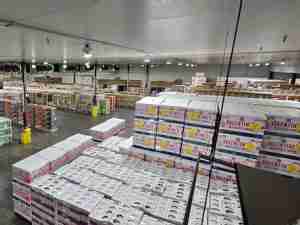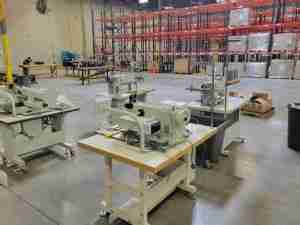At this year’s Supply Chain Event, French logistics company Scallog is giving people a sneak preview of a series of software innovations integrated into its Goods to Man solution. These have been designed and built with the requirements and business processes of the fashion, pharmaceutical & cosmetics, publishing, manufacturing and food sectors in mind. They give logistics operators the assurance of being able to automate – quickly and easily – their order preparation processes (or order picking), their inventory and resupply practices and the way in which they manage returns – all in accordance with best practice and the obligations in force in their sector.
We take a look at the most iconic software innovations for the profession!
From seamless traceability to reducing the arduous nature of work and maximising productivity, the series of software innovations featuring in Scallog’s Goods to Man solution – when used alongside an ERP or WMS – enable logistics operators to optimise the speed of execution and maximise the quality of their order preparation practices, or the way in which they manage returns – all in accordance with their own specific business practices, while at the same time improving the working conditions of their operators!

Collection management – The fashion industry, from clothing to accessories, involves a huge variety of logistics units: RCT multi-single crates, suspended clothes, RCBT for underwear and item attributes – collections, worlds, seasons, folded, suspended, matching, etc. The Scallog solution, packed with software intelligence, caters to collection management for all storage, picking and inventory operations in an automated area so that seasonality can be optimally managed.
Returns management – Managing returns is becoming essential for the fashion industry. According to the most recent GXO survey, 42% of French consumers say that they returned an item of clothing purchased online in 2021. The exponential increase in the numbers of returns in this sector, and more widely in the numbers of returns in e-commerce, means that logistics specialists need to automate and industrialise the returns management process. The Scallog solution, and its software intelligence in particular, automates all of the steps involved – control, putting away, storage – keeping handling operations and operator journeys to a minimum. It addresses the need to reduce costs and speed up the logistics operations involved in managing returns so that products can be put back on sale more speedily.
Batch number management – In the pharmaceutical & cosmetics and food industries, batch numbers are used to identify products by their manufacture date, production batch, production location and condition, batches of components used, etc. Expiry dates are also associated with this production information.
Tracking batch numbers throughout the logistics chain is an obligation for logistics operators in these sectors. This is so that products can be located at any time. Indeed, it may be necessary to withdraw products from sale for quality reasons… or simply because their expiry date has passed.
Having the Scallog solution in the automated area means that batch numbers can be optimally managed, ensuring high-quality inventory and sound management of expiry dates. If products need to be withdrawn or are recalled, or if they pass their expiry date, the Scallog solution automatically immobilises the products in question. This ensures that stock is managed securely, in accordance with regulations.
Management of incoming and outgoing serial numbers – In the manufacturing industry, the same applies to managing serial numbers. These are used to uniquely identify items manufactured, and are essential for managing customer warranties and product returns, as well as identifying thefts or counterfeit products. In the automated area, the Scallog solution ensures that incoming and outgoing serial numbers can be tracked in a detailed fashion, the aim being operational traceability and efficiency. This way, industrial logistics operators are able to optimally manage warranties and product returns, guaranteeing customer satisfaction.
Management of multiple packaging, kits and weight – The Scallog solution can also natively manage multiple or sub-multiple packaging, which is particularly valued by numerous sectors – including the pharmaceuticals, DIY and spare parts industries. It guides operators throughout all the stages involved in order preparation – from locating the “right part” to be picked via a visual on the product’s screen, to selecting the “right” quantity and the “right” packaging, thus avoiding errors and saving wasted time. The same applies for kit management: the Scallog solution offers an unequalled level of granularity in managing products. In the automated area, it enables high-performance storage and picking, so that operators can put the kits together in the shortest possible time and without making any mistakes. To reduce the arduous nature of the tasks involved for operators, particularly handling heavy loads in the manufacturing and publishing industries, the Scallog solution natively factors in the weight of the product to be picked. The heaviest products are assigned appropriate locations on the shelving units to avoid the need for excessive effort and operators having to adopt “incorrect” postures.
Management of worlds and brands – The Scallog solution can also be used to create “virtual” worlds for products or brands in the storage area. These are particularly appreciated by third-party logistics service providers with several clients. It can also take things even further and provide sub-worlds based on product rotation – low, average and high. In addition to significantly optimising the storage area, this division into worlds enables logistics operators to prepare orders extremely quickly, while reducing the numbers of journeys they have to make.
This new selection of software innovations is evidence of Scallog's innovation-centric culture and its field experience. It shows its willingness to see as many warehouses automated as possible, with the emphasis on simplicity, business needs and rapid return on investment so as to reach as many professionals as possible and create value for them.









